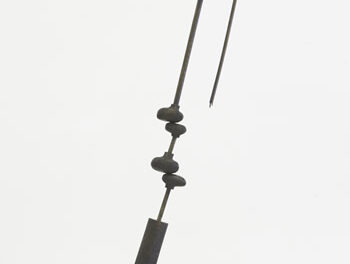Music for A Great Space closed its season out with what very well could have been the best concert of the spring. Organist Joby Bell presented a small but enthusiastic audience with some masterful works for the pipe organ that many, including the reviewer, had not heard before. The works heard were an absolute delight for those who came to Christ United Methodist Church that evening.
The first work heard was Johann Sebastian Bach’s Pièce d’Orgue, also known as the Fantasia in G, S. 572. Bach was the supreme master of the organ in the 18th century and very well may be the greatest organist who ever lived. Of course he is better known for his evergreen Toccata and Fugue in D minor, S. 565, but this joyous piece certainly deserves wider acclaim. G major is a brilliant, bright key and the beautiful Fisk organ of Christ Church provided sparkling tones that suit the work’s loveliness. Bell executed Bach’s tricky counterpoint with a skill that cannot help but be admired, all the while providing an excellent sense of forward motion. It is quite easy to become bogged down in the denseness of Baroque music, but Mr. Bell blew a breath of fresh air into a work that could easily be sunk by its complexity.
Following the Bach was a piece by a composer that I had never encountered – the “Noel Suisse” by Louis Claude-Daquin. A collection of French carols put together into one continuous piece, this tour-de-force of a work showed off all of the brilliant combinations of voicing that this organ is capable of, in particular its brass family. The work is very much in the vogue of Baroque, but also demonstrates a forwardness toward the Classical period in the terms of its balance and cogency of writing. It was an unusual programming choice for sure but nonetheless very delightful.
Departing from the brilliance of Daquin, the next work was César Franck’s Prière, or Prayer, for organ. A beautifully slow work, this piece is a study in just how much can be done in one register of the organ, with minimal stop work and a hushed tone. This meditative piece deserves to be wider known, simply because it brings a serenity that is hard to find in classical music. Franck, much like Bach, was a virtuoso on the instrument, and thanks to the efforts of Artiside Cavaillé-Coll, some very fine instruments were built in France for these brilliant works to be composed upon.
Felix Mendelssohn also knew a thing or two about the pipe organ, and composed some incredibly lovely works for the instrument, which Queen Victoria was quite fond of. The Sonata No. 5 in D is quintessential Mendelssohn: clear lines, tasteful choice of balance, and an overall sunny disposition. To program it after the Franck was a wise choice, as its joyous strains lit up the hall after being lowered into quiet and meditation by the Franck. Mendelssohn, like Daquin, straddled the gap between Classicism and Romanticism, and elements of both compositional schools were heard in this short, delightful work.
After intermission, Bell treated the audience to Charles Marie-Widor’s Symphonie Romane. Based upon Catholic Mass chants, this imposing work for organ was a perfect capstone to the evening. In four movements, it fully demonstrated the power that the pipe organ is capable of all the way down to the massive 32′ foundation notes that caused Christ Church to resonate. Bell informed the audience before playing it that this was his first time performing the piece in public. I fully commend him for programming this magisterial composition, because its various sections present a challenge in many ways, from meditative slow lines to climaxes that build and build upon the organ’s capabilities.
A standing ovation greeted Bell at the work’s conclusion. If Joby Bell stops by Greensboro again soon, I fully recommend going and hearing him perform. I know I certainly would.












